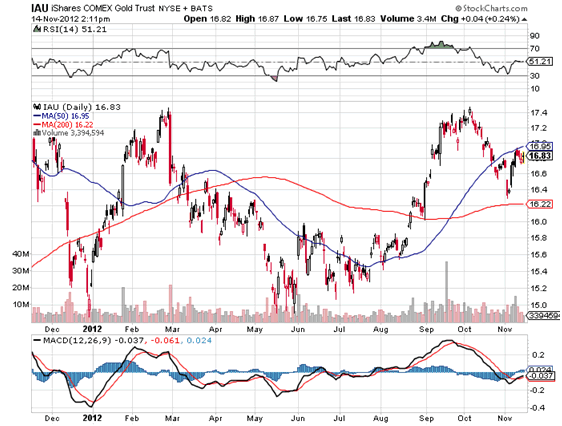How to Protect Your Portfolio from a Slumping U.S. Dollar in 2013
Commodities / Gold and Silver 2012 Nov 17, 2012 - 01:18 PM GMT John Paul Whitefoot writes: No one said austerity measures would be an easy pill to swallow. But, after decades of overspending, they’re become an unwanted necessity. And the fed-up workers of Europe are uniting!
John Paul Whitefoot writes: No one said austerity measures would be an easy pill to swallow. But, after decades of overspending, they’re become an unwanted necessity. And the fed-up workers of Europe are uniting!
Protests broke out Wednesday across Europe in a coordinated day of action over ongoing austerity policies. While some of the largest and most violent protests took place in Spain, Portugal, Greece and Italy also took to the streets.
Over the last three years, Spain, Portugal and Greece have all slashed spending on pensions, public sector wages, hospitals, and schools in an effort to get public finances back on track.
It hasn’t kicked in yet. In Portugal and Greece—both rescued with European funds and under strict austerity programs—the economic downturn increased in the third quarter. Portuguese unemployment jumped to a record 15.8%. In Spain and Greece, one in four of the workforce is jobless. (Source: Tisera, F., and Alvarena, D., “Anti-austerity marches turn violent across southern Europe,” Reuters, November 14, 2012.)
Sound familiar?
In an effort to stem the economic slide of the U.S. housing collapse that first surfaced in 2005, the Federal Reserve initiated quantitative easing in November 2008. To date, the Federal Reserve has printed off close to $3.0 trillion. That number climbs by an additional $85.0 billion each month. It was supposed to increase lending, create more jobs, kick start housing, and lower the unemployment rate.
What has really happened? After three rounds of austerity measures, unemployment is rising, company profits are falling, financial markets are fragile, and the housing sector is still in disarray. What has it done? It’s created a weak dollar and an anemic economy.
And, it could get worse if America tumbles over the “fiscal cliff” on January 1, 2013. If the White House and Congress do nothing, and Bush-era tax cuts are not extended, the fuse to the A-Bomb (Austerity) will go off. Government spending cuts and tax increases will kick in, and the U.S. will fall back into recession…taking other economies down with it.
And Americans will take to the streets!
But this probably won’t happen. Neither party will allow America to tumble over the fiscal cliff; they will, at the last possible minute, come to some sort of resolution. In 2013, the U.S. government will continue to spend, increase the budget deficit, and get more money from the Federal Reserve.
Americans will be entering 2013 with depleted savings, and increasing costs on the heels of a devalued dollar. By all appearances, a U.S. recession in 2013 is all but inevitable.
How can investors protect and even build their wealth in a seriously depressed economy? In 2013, investors will have an unprecedented opportunity to purchase gold exchange-traded funds (ETFs).
Why gold?
For starters, gold is expected to rally above $2,000 an ounce in 2013 as central banks continue to print money in an effort to shore up the global economy. And, with just a month to go, it looks as if gold is headed for its 12th annual gain.
Gold has been bullish since August on concerns that ongoing stimulus by governments and central banks will further debase currencies and drive inflation. (Source: Sim, G., “Gold to Gain to $2,000 on Money Printing, Deutsche Bank Says,” November 14, 2012.)
In a foreshadowing of 2013, it was announced that holdings in gold-backed ETFs expanded to the highest level ever last week.

Chart courtesy of www.StockCharts.com
The iShares Gold Trust (NYSE/IAU) is an ETF that trades in step with the price of gold bullion but, as you can see, at a ratio of roughly 10-to-1. The shares of the Trust are backed by physical gold, and held in vaults in New York, Toronto, London, and other locations. Unlike Fort Knox, iShares is a little more transparent. You actually know the Trust has gold because vault inspections are conducted twice a year.
The company’s vaults were last inspected in June. At the close of business on June 8, 2012, the Trust held title to 14,239 gold bars with a total of 5,699,731.965 troy ounces. (Source: Inspectorate, “Inspection of Gold Bullion [iShares Gold Trust],” iShares web site, June 22, 2012.)
The White House and Federal Reserve may be working overtime at devaluing the dollar, but that doesn’t mean your portfolio has to follow suit. For those investors who do not have deep pockets, buying a gold-backed ETF is a cost-efficient alternative to investing in physical gold and fortifying your portfolio.
Source: http://www.investmentcontrarians.com/r...
By John Paul Whitefoot, BA
Investment Contrarians is our daily financial e-letter dedicated to helping investors make money by going against the “herd mentality.”
Copyright © 2012 Investment Contrarians- All Rights Reserved Disclaimer: The above is a matter of opinion provided for general information purposes only and is not intended as investment advice. Information and analysis above are derived from sources and utilising methods believed to be reliable, but we cannot accept responsibility for any losses you may incur as a result of this analysis. Individuals should consult with their personal financial advisors.
© 2005-2022 http://www.MarketOracle.co.uk - The Market Oracle is a FREE Daily Financial Markets Analysis & Forecasting online publication.



